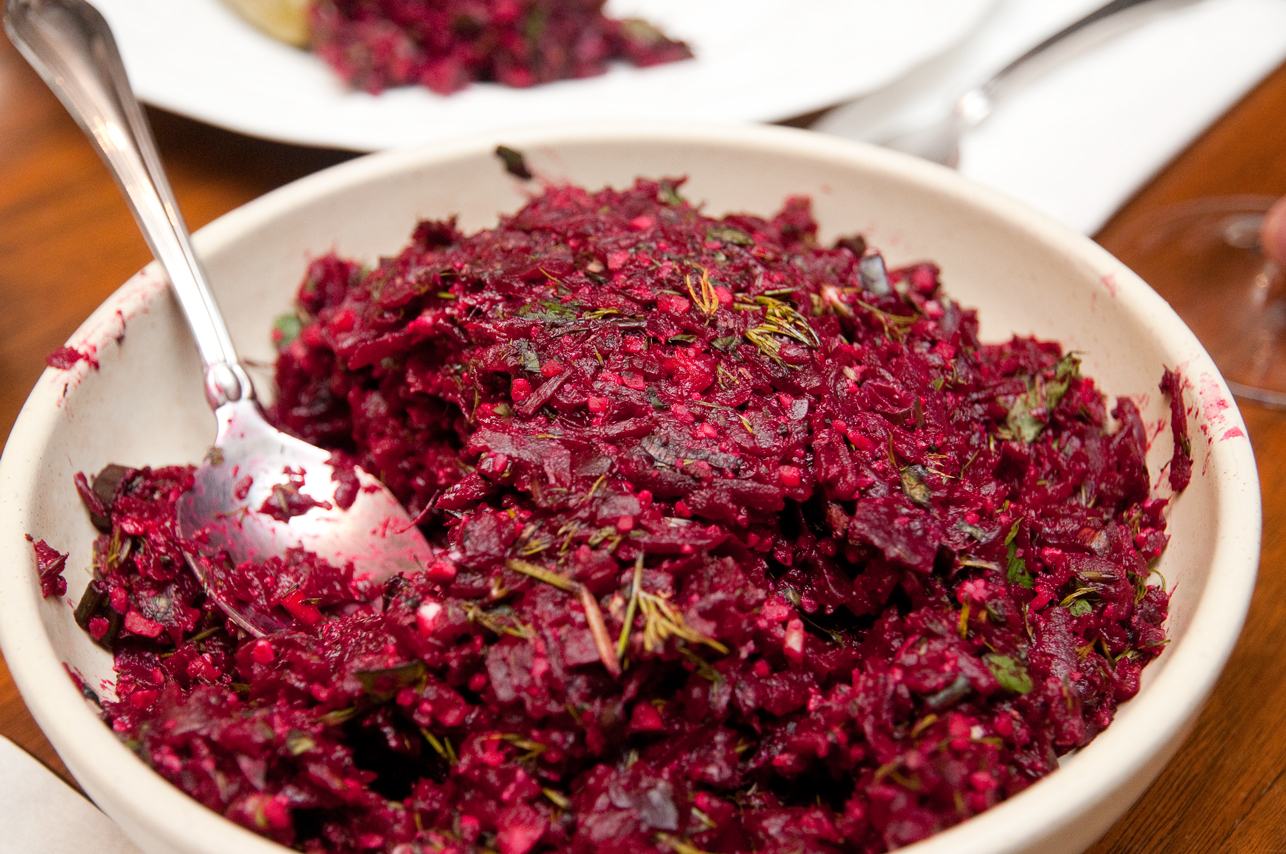I'm a sauce lover. Anything that involves a sauce, I'm there. I often ignore the ikkur (i.e. meatballs). Just sauce me.
Stuffed cabbage is the stereotypical dish of my people, but Ma has always preferred preparing its close sibling, stuffed pepper. Not much difference between the two, except that stuffing pepper is an easier task than pre-wilting cabbage leaves and carefully folding the contents therein.
My household has now entered an age of new and improved eating, which usually means that old-timey favorites may require . . . reinvention.
How does the classic stuffed pepper go? (1) canned tomato sauce = copious sodium. (2) white rice = unnecessary carbs/little nutritional value (3) red meat = obvious reasons, as well as the fact that I'm not crazy about beef. I like birds. (4) green peppers = aesthetically lacking.
Research commenced. Recipes were summoned. Grated vegetables appeared in many, replacing the rice. Others used red, orange, and yellow peppers, turkey and chicken instead of cow.
The results of the first attempt were quite tasty, minor tweaks required. The joy of stovetop cooking is that rarely are exact recipes needed, more of a general guideline.
Various recipes used various quantities of various vegetables; I used some of each, to palatable delight. So one doesn't need to use specifically what I used below; mixing, matching, and omitting is fine.
Stuffed Pepper—Vague Guideline (please alter/improvise)
4-5 bell peppers, one green (try to select peppers that will stand in a pot)
1 lb ground meat (I like chicken)
2 carrots, grated*
2 zucchinis, grated*
1 onion, grated (or shallots, or scallions, or leeks)*
2 stalks celery, grated*
2-3 fresh mushrooms, grated*
4 cloves garlic, grated/minced
hefty gratings of black pepper
squirt of mustard
squirt of sriracha
1 spoonful tomato paste (from the below jar)
Sauce:
(one can also sauté an onion for the base)
1 15 oz. jar diced/crushed tomatoes
1 6 oz. jar tomato paste
1 tablespoon honey/sugar
1 tablespoon to ¼ cup vinegar/wine
generous sprinkle of Italian seasoning (oregano and/or basil will do)
shake of red pepper flakes
1. Buzz vegetables of choice through the grating blade in the food processor. Heat oil in bottom of pot, pouring in these vegetables to sweat down a little, along with the spoonful of paste. Initially cover, then remove lid as the heat builds. The intent is not to caramelize, but to shoo out some liquid. Stir from time to time. When they are at the desired limp state, remove from heat.
2. While the above is shvitzing, prepare the peppers. Carefully cut off the tops, trying to keep them whole, if possible (if not, no biggie). Remove seeds with knife, fingers, serrated spoon. For steadier standing, slightly slice the bottom bumps to make them more level.
3. Being careful not to overwork the meat, mix in, along with the seasonings, about half the vegetables.
4. Stuff the peppers, and place them aside.
5. Heat a little more oil (if sautéing an onion, this is your moment) and add all sauce ingredients and remaining buzzed veggies. Tomato sauce can burn easily, so keep an eye on the flame once it reaches a vigorous simmering point.
6. Once tomato sauce is good and hot, carefully add the peppers. (I miscalculated the roominess of my pot, and had to move some peppers and sauce into another.)
7. Cook for about an hour, checking to make sure nothing "sticks."
8. I was very, very happy.
*Vegetable quantities is based on preference. No hard rules here. Leave them out; add more of others. Your call. (A recipe I recently discovered for stuffed cabbage uses cauliflower to replace the rice. That's also an option.)

















